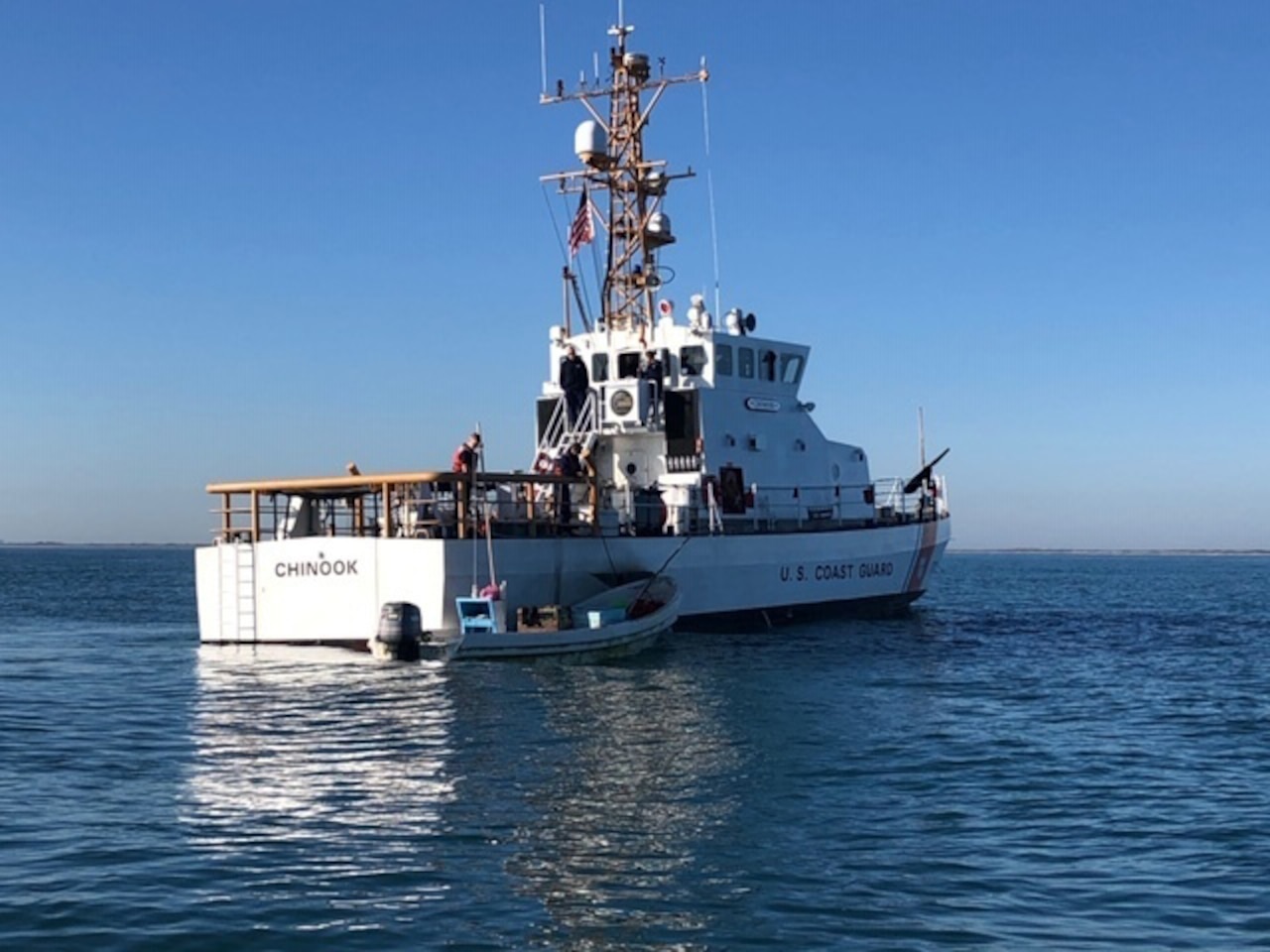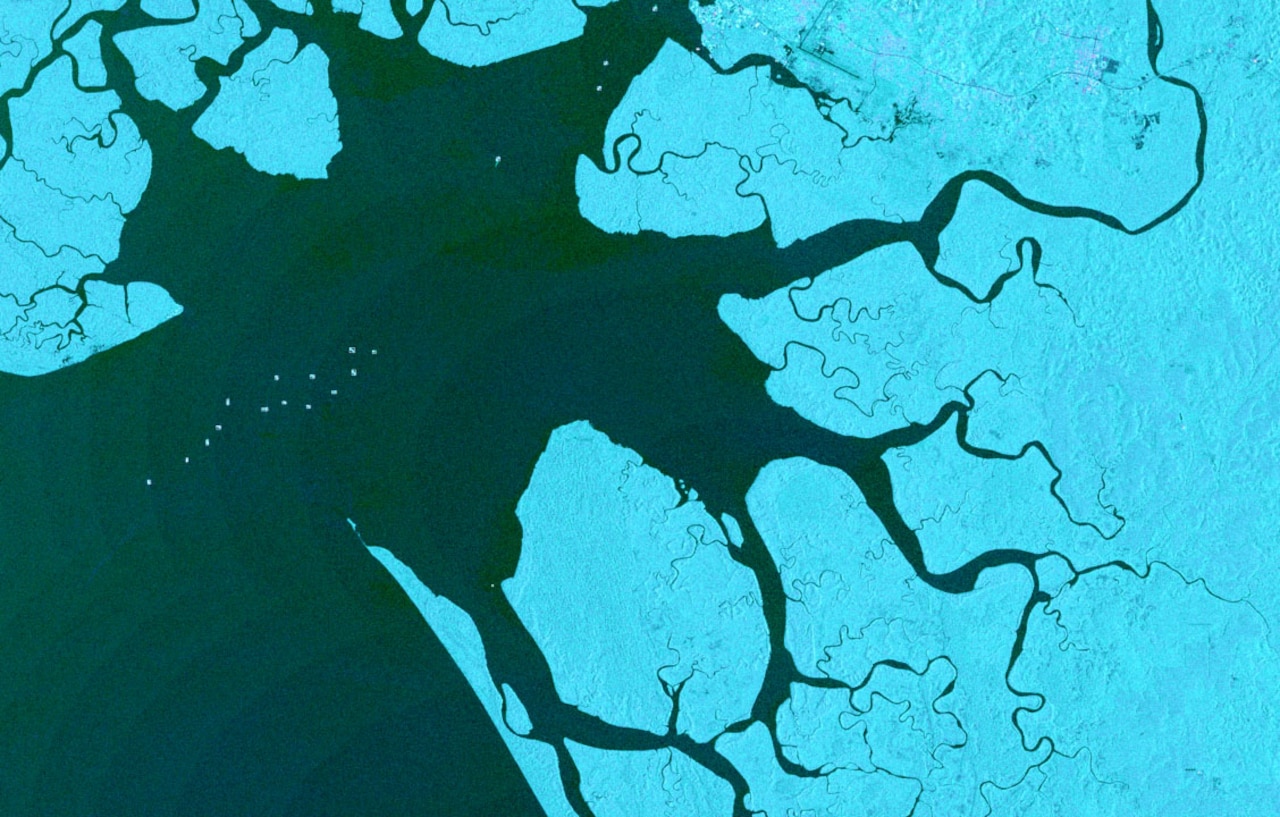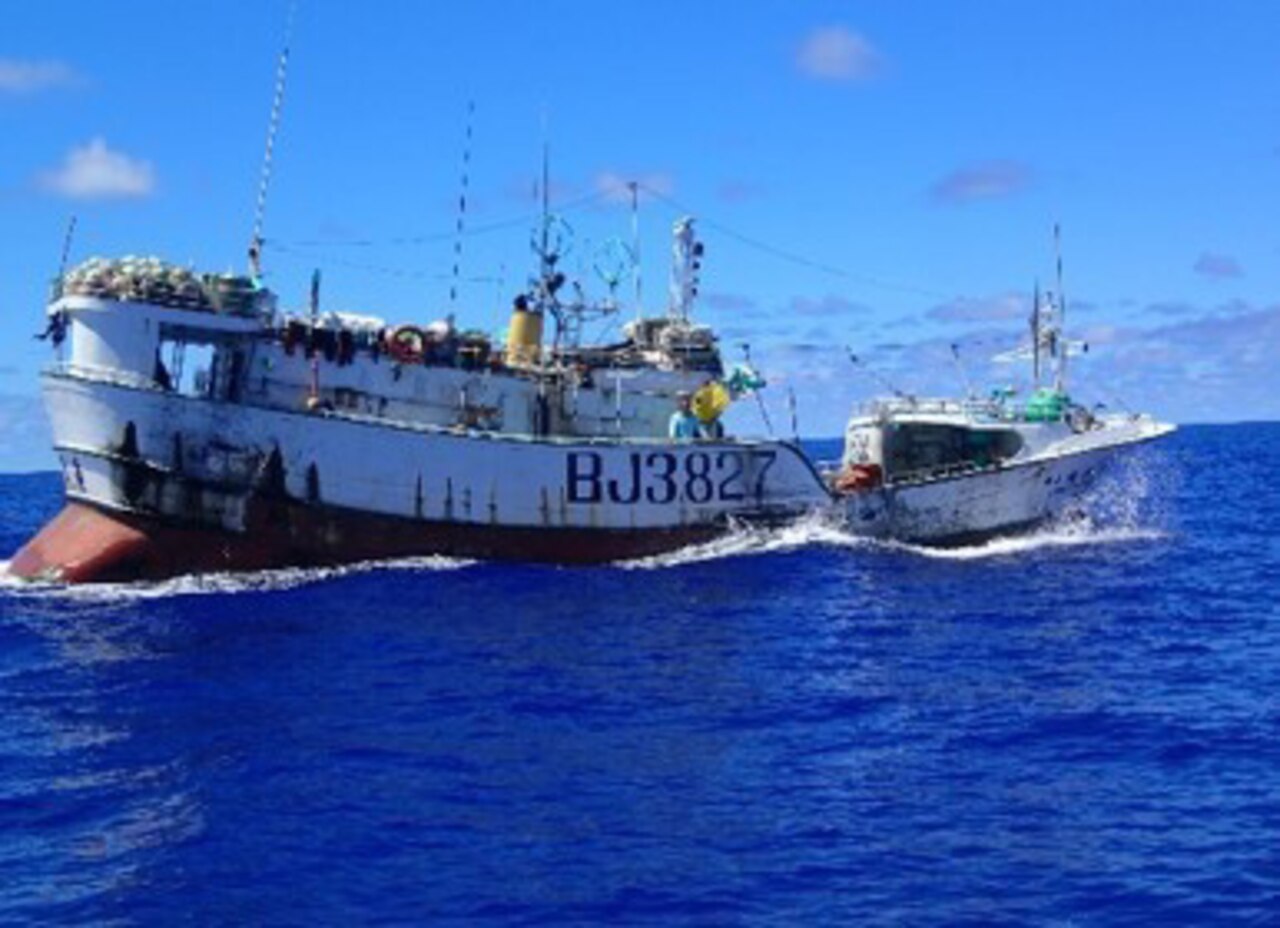
The Defense Innovation Unit (DIU) and Global Fishing Watch, a nonprofit that uses satellites to provide a view of global fishing activities, announced today a new xView3 Challenge to combat illegal, unreported and unregulated fishing.
The xView3 is a competition with a $150,000 prize that’s intended to attract skilled developers who like a challenge and are adept at exploring novel ways to harness satellite-based synthetic aperture radar data to detect “dark” vessels, which don’t publicly broadcast their location or appear in public monitoring systems.
Synthetic aperture radar can penetrate clouds and darkness to reveal dark vessels’ locations and activities. Winning machine learning algorithms must be able to automatically detect and characterize dark vessels, according to a DIU news release.
The Defense Department, U.S. Coast Guard, allies, partners and nonprofit organizations are all interested in rapid detection of illegal, unreported and unregulated fishing activity to mitigate these damages, said Vice Adm. Scott Buschman, U.S. Coast Guard deputy commandant for operations.
”IUU fishing undermines a nation’s sovereignty, threatens its economic security, and weakens global rules-based order,” continued Buschman. ”The United States can provide global leadership to combat IUU fishing by creating partnerships and collaborative, durable networks. Our collective efforts start with maritime domain awareness.”
The challenge will provide competitors with one of the largest open-access maritime datasets ever derived from SAR satellites. The scalability of automated vessel detection combined with SAR imagery will dramatically enhance situational awareness of IUU fishing activity and, as a result, lead to more focused patrols and interception of suspected offenders.

”Our goal with this series of challenges is to attract new ideas to some of the most important global safety and security problems, as well as putting the new operational solutions in place at the speed of relevance,” said Michael Brown, DIU director.
The prize for this challenge is provided by DIU and Global Fishing Watch and will be awarded to U.S. or international participants – individuals or companies – with the best performing algorithms, according to the DIU news release.
IUU fishing is a threat to food security, marine ecosystem health, as well as geopolitical stability. According to the Food and Agriculture Organization of the United Nations, IUU fishing accounts for 20% of the global seafood catch — and up to 50% in some areas.
DIU and GFW will share the open-source algorithms, reflecting the organizations’ vision of harnessing open-source, low-cost data to advance maritime domain awareness and collaboration among governments, nonprofits and academia to combat IUU fishing, according to the DIU news release.
“We must cooperate and communicate among enforcement authorities and share pertinent information, including with non-government entities that share our objectives and can help disseminate information quickly to our network of partners,” Buschman said.
Tracking data from the publicly available automatic identification system – a collision avoidance system that constantly transmits a vessel’s location at sea – is an increasingly valuable tool to monitor fishing activity; however, vessels are known to switch off or tamper with their AIS devices to hide illicit activities, Buschman noted.
“We are excited to partner with the Defense Innovation Unit, Global Fishing Watch, and the U.S. Coast Guard on the xView3 competition to be on the cutting edge of the fight against IUU fishing,” said James Landon, director of National Oceanic and Atmospheric Agency’s Office of Law Enforcement. “Together, we can leverage technology to tackle this pressing issue and develop solutions that strengthen our dark vessel detection capabilities, allowing us to improve the interdiction and prosecution of IUU fishing.”

”This contest is a great opportunity for us to advance state-of-the-art technology for detecting dark vessels,” said Paul Woods, chief innovation officer at Global Fishing Watch. “We can help eliminate illegal fishing by making the best solutions open and applying them to a global, free data set that enables other actors to also benefit from these highly scalable tools. The more people that can use these tools, the faster we will reduce the scope for bad actors to operate in our ocean.”
The xView3 competition builds on the foundation laid by DIU’s two prior xView challenges, which resulted in algorithms that provide automated post-disaster assessments of roads, bridges and buildings by leveraging winning machine-learning algorithms, said Jared Dunmmon, DIU’s artificial intelligence technology director.
The 2019 competition attracted some 2,000 submissions, according to DIU’s website. The top three algorithms had an 80% damage assessment success rate – four times better than the government baseline algorithm. The winning solution was deployed to assist during the 2019-2020 fires in the Australian bush, the 2020 California fire season and the 2020 U.S. hurricane season. The xView2 datasets are currently used by some 30 government agencies, academic institutions and industry partners for research and operations.
The xView3 Challenge website will go live in mid-August and run for three months. Those interested in learning more, participating or registering should visit the xView3 Challenge page on DIU’s website.
The xView3 Challenge is organized and run by DIU in collaboration with Global Fishing Watch and with additional support from the U.S. Coast Guard, NOAA and the National Maritime Intelligence-Integration Office.

